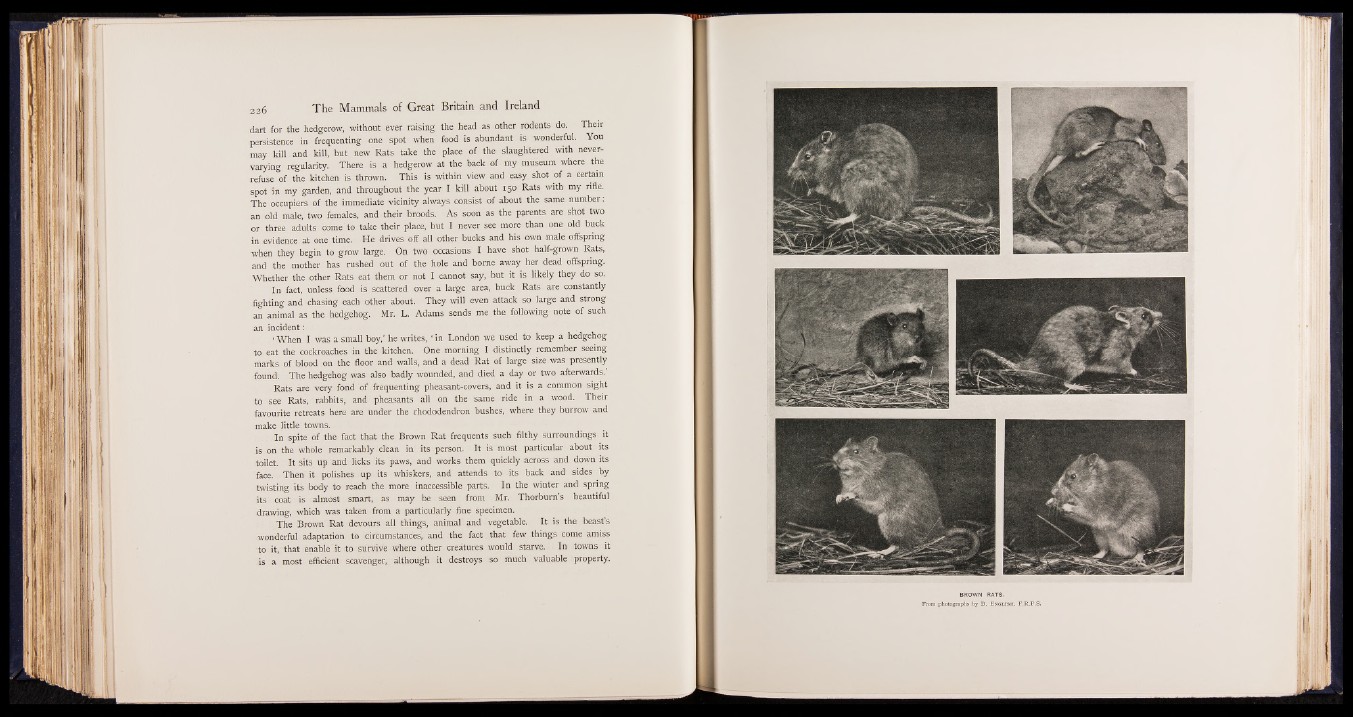
dart for the hedgerow, without ever raising the head as other rodents do. Their
persistence in frequenting one spot when food is abundant is wonderful. You
may kill and kill, but new Rats take the place of the slaughtered with never-
varying regularity. There is a hedgerow at the back of my museum where the
refuse of the kitchen is thrown. This is within view and easy shot of a certain
spot in my garden, and throughout the year I kill about 150 Rats with my rifle.
The occupiers of the immediate vicinity always consist of about the same number:
an old male, two females, and their broods. As soon as the parents are shot two
or three adults come to take their place, but I never see more than one old buck
in evidence at one time. He drives off all other bucks and his own male offspring
when they begin to grow large. On two occasions I have shot half-grown Rats,
and the mother has rushed out of the hole and borne away her dead offspring.
Whether the other Rats eat them or not I cannot say, but it is likely they do so.
In fact, unless food is scattered over a large area, buck Rats are constantly
fighting and chasing each other about. They will even attack so large and strong
an animal as the hedgehog. Mr. L. Adams sends me the following note of such
an incident:
‘When I was a small boy,’ he writes, ‘ in London we used to keep a hedgehog
to eat the cockroaches in the kitchen. One morning I distinctly remember seeing
marks of blood on the floor and walls, and a dead Rat of large size was presently
found. The hedgehog was also badly wounded, and died a day or two afterwards.
Rats are very fond of frequenting pheasant-covers, and it is a common sight
to see Rats, rabbits, and pheasants all on the same ride in a wood. Their
favourite retreats here are under the rhododendron bushes, where they burrow and
make little towns.
In spite of the fact that the Brown Rat frequents such filthy surroundings it
is on the whole remarkably clean in its person. It is most particular about its
toilet. It sits up and licks its paws, and works them quickly across and down its
face. Then it polishes up its whiskers, and attends to its back and sides by
twisting its body to reach the more inaccessible parts. In the winter and spring
its coat is almost smart, as may be seen from Mr. Thorburn’s beautiful
drawing, which was taken from a particularly fine specimen.
The Brown Rat devours all things, animal and vegetable. It is the beast’s
wonderful adaptation to circumstances, and the fact. that few things come amiss
to it, that enable it to survive where other creatures would starve. In towns it
is a most efficient scavenger, although it destroys so much valuable property.